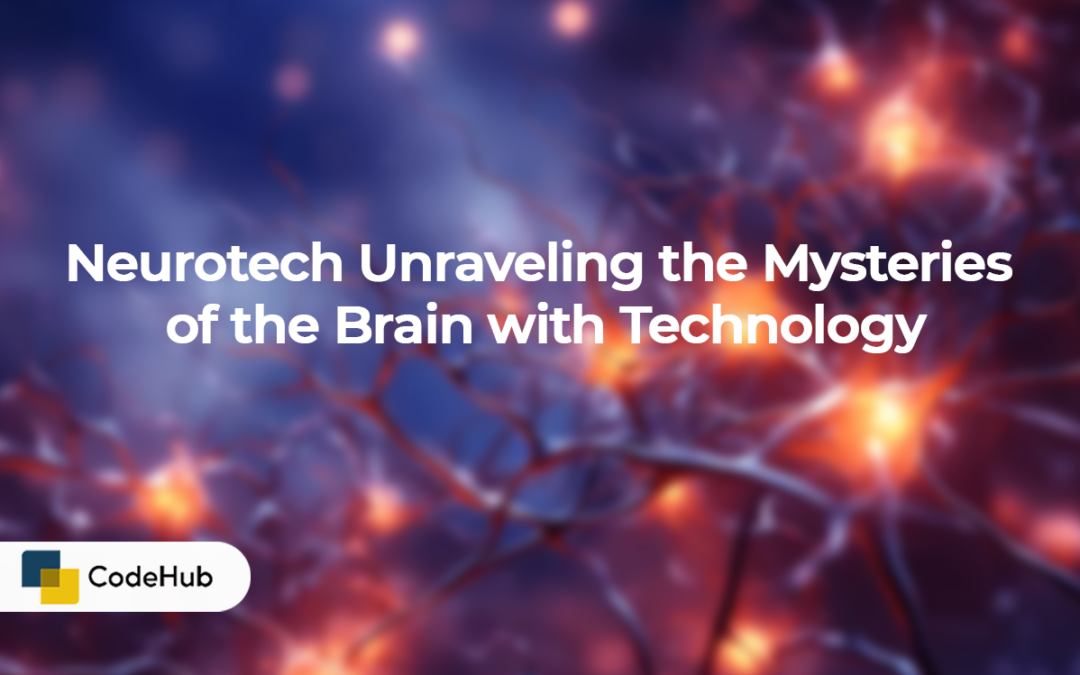Neurotech: Unraveling the Mysteries of the Brain with Technology
The brain is the most complex and mysterious organ in the human body. It is responsible for our thoughts, emotions, memories, perceptions, and behaviors. It is also the source of our creativity, intelligence, and consciousness. However, despite decades of research and advances in neuroscience, we still know very little about how the brain works, and how it relates to our mind and identity.
Neurotech is a field that aims to unravel the mysteries of the brain with technology. Neurotech is an interdisciplinary field that combines neuroscience, engineering, computer science, and medicine. Neurotech develops and applies various technologies and methods to measure, monitor, manipulate, and enhance the brain and its functions. Neurotech can also help diagnose, treat, and prevent various neurological and psychiatric disorders, such as Alzheimer’s, Parkinson’s, depression, and epilepsy.
Neuroimaging
Neuroimaging is a branch of neurotech that uses various techniques and devices to visualize the structure and activity of the brain. Neuroimaging can help us understand how the brain is organized, how it changes over time, and how it responds to different stimuli and tasks. Neuroimaging can also help us identify the brain regions and networks that are involved in various cognitive and emotional processes, such as learning, memory, attention, language, and emotion.
Some of the examples of neuroimaging techniques are:
– Magnetic resonance imaging (MRI): A technique that uses a strong magnetic field and radio waves to produce detailed images of the brain’s anatomy and tissue.
– Functional magnetic resonance imaging (fMRI): A technique that uses MRI to measure the changes in blood flow and oxygen levels in the brain, which reflect the brain’s activity and function.
– Electroencephalography (EEG): A technique that uses electrodes attached to the scalp to record the electrical signals generated by the brain’s neurons, which reflect the brain’s rhythms and patterns.
– Positron emission tomography (PET): A technique that uses a radioactive tracer injected into the bloodstream to measure the metabolism and chemical activity of the brain, which reflect the brain’s function and health.
Neurostimulation
Neurostimulation is a branch of neurotech that uses various techniques and devices to stimulate or modulate the brain’s activity and function. Neurostimulation can help us alter or enhance the brain’s states and abilities, such as mood, cognition, and performance. Neurostimulation can also help us treat or alleviate various neurological and psychiatric symptoms, such as pain, tremor, and addiction.
Some of the examples of neurostimulation techniques are:
– Transcranial magnetic stimulation (TMS): A technique that uses a coil placed over the scalp to generate a magnetic field that induces an electric current in the brain, which can activate or inhibit the brain’s neurons and circuits.
– Transcranial direct current stimulation (tDCS): A technique that uses electrodes attached to the scalp to deliver a low and constant electric current to the brain, which can modulate the brain’s excitability and plasticity.
– Deep brain stimulation (DBS): A technique that uses electrodes implanted in the brain to deliver electrical pulses to specific brain regions or nuclei, which can regulate the brain’s activity and function.
– Optogenetics: A technique that uses genetic engineering and light to control the activity of specific types of neurons in the brain, which can manipulate the brain’s circuits and behaviors.
Brain-computer interfaces
Brain-computer interfaces (BCIs) are a branch of neurotech that use various techniques and devices to establish a direct communication between the brain and a computer or an external device. BCIs can help us decode and encode the brain’s signals and information, such as thoughts, intentions, and sensations. BCIs can also help us interact and control various devices and systems, such as prosthetics, robots, and virtual reality.
Some of the examples of BCIs are:
– Electrocorticography (ECoG): A technique that uses electrodes implanted on the surface of the brain to record the brain’s electrical activity, which can be used to control a cursor, a keyboard, or a robotic arm.
– BrainGate: A system that uses a microelectrode array implanted in the motor cortex of the brain to record the brain’s signals, which can be used to control a computer, a wheelchair, or a robotic arm.
– Neuralink: A system that uses a flexible and thin electrode thread implanted in the brain to record and stimulate the brain’s activity, which can be used to interface with a smartphone, a computer, or a smart device.
– Neurable: A system that uses a wireless EEG headset to record the brain’s signals, which can be used to control a virtual reality game, a drone, or a toy car.
Conclusion
Neurotech is a field that is revolutionizing our understanding and manipulation of the brain with technology. Neurotech is a field that offers immense possibilities and opportunities for scientific discovery, medical innovation, and human enhancement. Neurotech is also a field that poses significant challenges and risks for ethical, social, and legal implications and regulations.
Neurotech is a field that is changing the way we perceive, interact, and communicate with ourselves, with others, and with the world. Neurotech is a field that is transforming the nature and boundaries of our mind, our identity, and our humanity.

